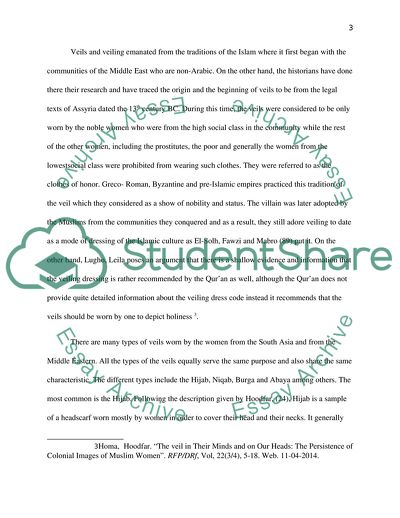Cite this document
(Veiling among South Asian and Middle Eastern Women Report Example | Topics and Well Written Essays - 2000 words, n.d.)
Veiling among South Asian and Middle Eastern Women Report Example | Topics and Well Written Essays - 2000 words. https://studentshare.org/culture/1825551-veiling-among-south-asian-and-middle-eastern-women
Veiling among South Asian and Middle Eastern Women Report Example | Topics and Well Written Essays - 2000 words. https://studentshare.org/culture/1825551-veiling-among-south-asian-and-middle-eastern-women
(Veiling Among South Asian and Middle Eastern Women Report Example | Topics and Well Written Essays - 2000 Words)
Veiling Among South Asian and Middle Eastern Women Report Example | Topics and Well Written Essays - 2000 Words. https://studentshare.org/culture/1825551-veiling-among-south-asian-and-middle-eastern-women.
Veiling Among South Asian and Middle Eastern Women Report Example | Topics and Well Written Essays - 2000 Words. https://studentshare.org/culture/1825551-veiling-among-south-asian-and-middle-eastern-women.
“Veiling Among South Asian and Middle Eastern Women Report Example | Topics and Well Written Essays - 2000 Words”. https://studentshare.org/culture/1825551-veiling-among-south-asian-and-middle-eastern-women.


